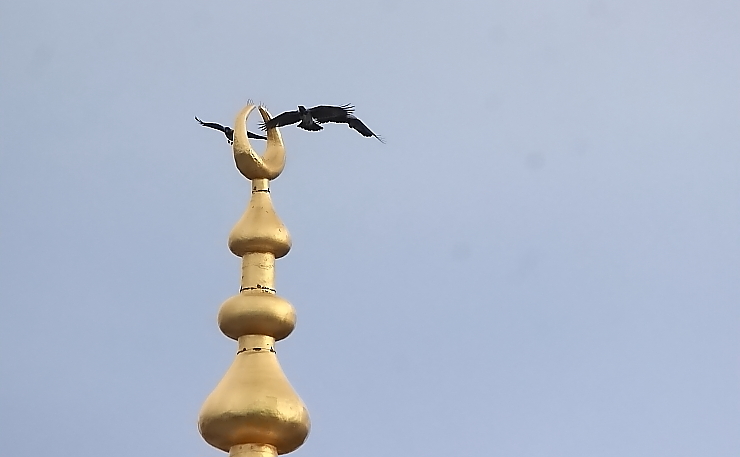
Turkey seems to be having a moment right now. A surprising number of our Mexican friends would like to go there — get this — because they love Turkish soap operas. And there are, amazingly enough, direct flights from Mexico City to Istanbul. I wish we could have taken that flight, since we actually took four flights to eventually find our way there, on our recent Old World trip. (Flights #6 and 8 also ended in Istanbul.) Major kudos to Turkish Airlines, by the way; I can’t remember the last time I had a hot sandwich on a one-hour flight.
As I mentioned last week, our trip to Turkey was work-related. And Istanbul was only a necessary intermediate point for reaching our real Turkish destination. Still, it is a world-class city, so we chose to spend 24 hours there. And birding was definitely not the main purpose of this 5-week trip. (Not that that ever stops me.) So, we headed not into bird-heavy natural areas, but straight into the center of this two-and-a-half-millenium-old city. Could I possibly see some birds there?
We took a bus, then a taxi, into the area just south of Istanbul’s Blue Mosque. (Tourist note: Unless you speak Turkish, take the taxi from the airport for the fixed price of 50 Euros. That sounds expensive, but our attempts at saving money ended up costing more. Better yet, wait to go until the new airport metro line to open, as is supposed to happen soon.)
We stayed in the Dersaadet Hotel, an Ottoman Mansion from the late 1800s. This building is a good 200 m (660 ft) from the Bosporus. But it has a wonderful roof terrace from which to watch birds on the waterway, as well as on the nearby rooftops. (Another tourist note: the complementary breakfast was somewhat less than less than wonderful on the morning of our stay. Go for the birds, and the old building; they are worth it.)
While the city birds are unlikely to surprise most Europeans, there provided several nice surprises for an American like me. Some had to be seen at a distance, others like to get up close and personal. Seabirds were just close enough for fairly reliable IDs:
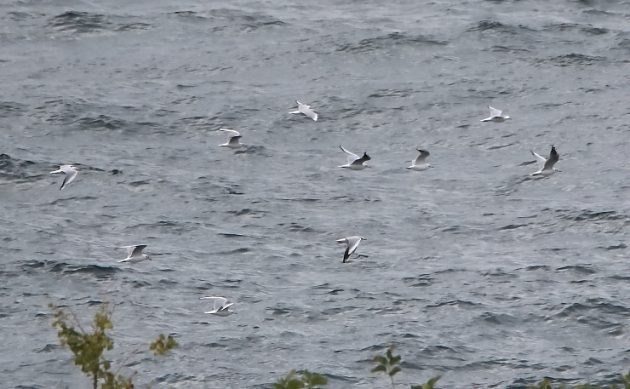
The bold white leading edges on the gull wings told me these were Black-headed Gulls. The lack of black heads told me they had switched to winter plumage.
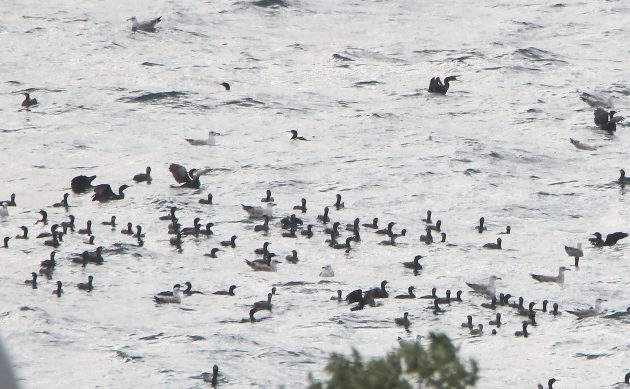
Some of the many cormorants seemed noticeably larger than others. Since Pygmy Cormorants seem to prefer inland waters, this means I was seeing both Great Cormorants and Europeans Shags. These floating gulls were probably Yellow-legged Gulls, but I saw a few in flight that appeared to be Mediterranean Gulls.
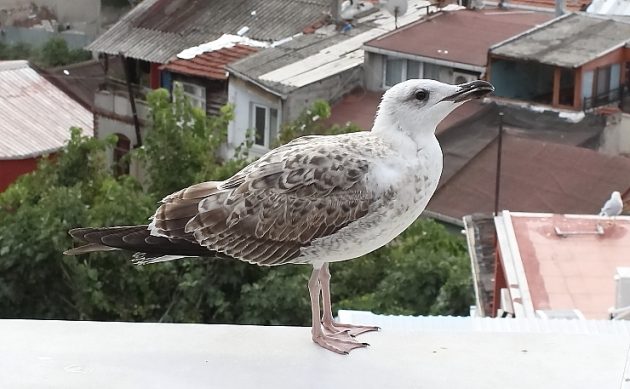
This 2nd-year winter Yellow-legged Gull wanted me to get a very good look at him. I’m pretty sure he wouldn’t have complained about the quality of our complementary breakfast, had I chosen to share it. Immature Yellow-legged Gulls have pink legs, because, well, of course they do.
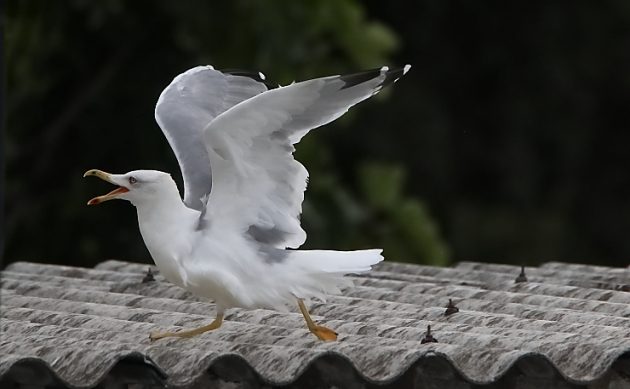
Eventually, their legs do turn yellow. And, apparently, they feel pretty good about it.
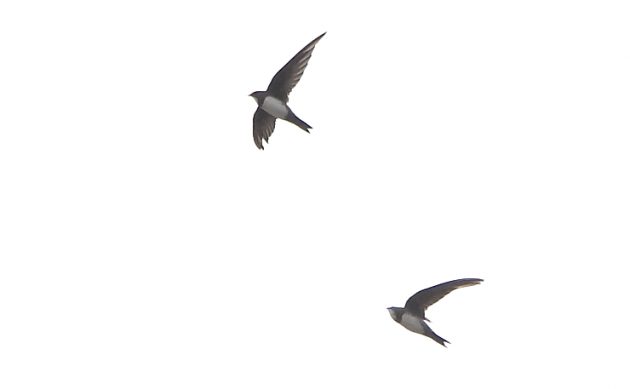
Some Alpine Swifts flew close enough for me to get a good look at them. Which was very kind, because they were one of my two lifers for the morning. My other lifer, the Laughing Dove, would turn out to be quite common in the Middle East.
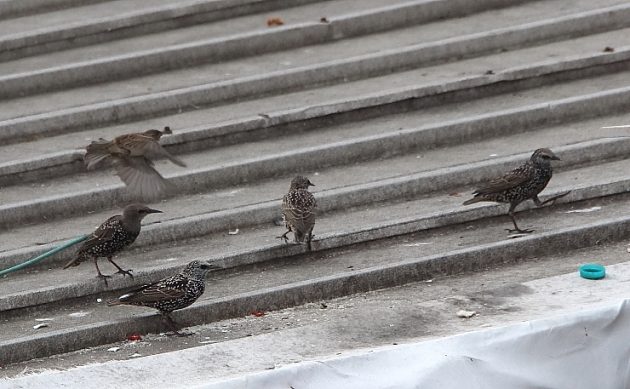
Believe it or not, we do not see European Starlings in central Mexico. If you ignore their invasive nature, they really are lovely little birds.
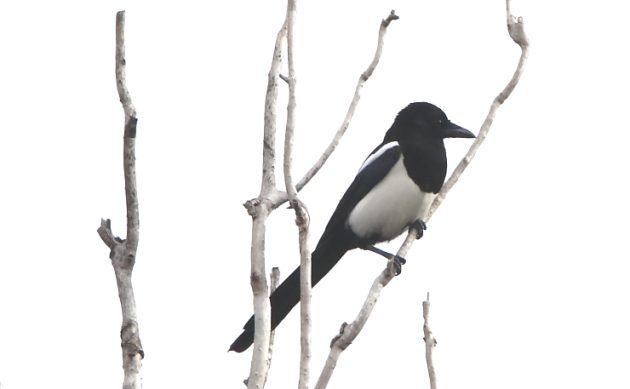
We also have no magpies in central Mexico, which is a pity. So I appreciated this lone Eurasian Magpie making its appearance. I like magpies.
Istanbul is a city of many mosques, and while our hotel was quite close to the famous Blue Mosque and Hagia Sophia, one set of minarets was even closer. Now, for the tourist, a nearby minaret means the call to prayer will wake you up early each morning. But to Hooded Crows, a minaret apparently means… playtime! This went on for at least as long as I was willing to watch.
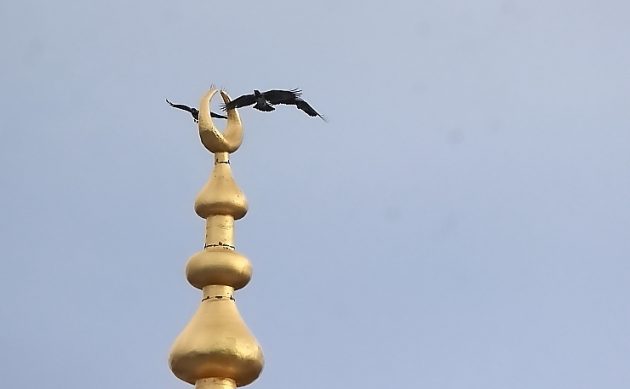
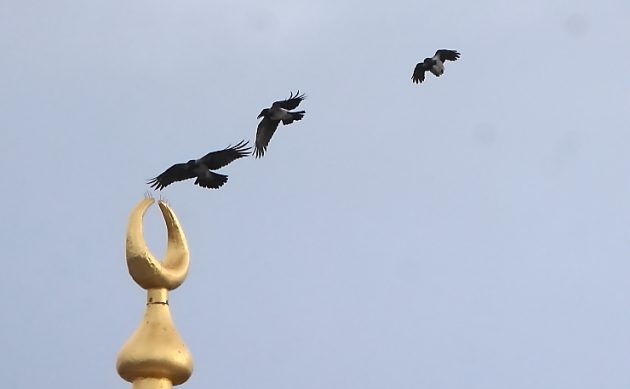
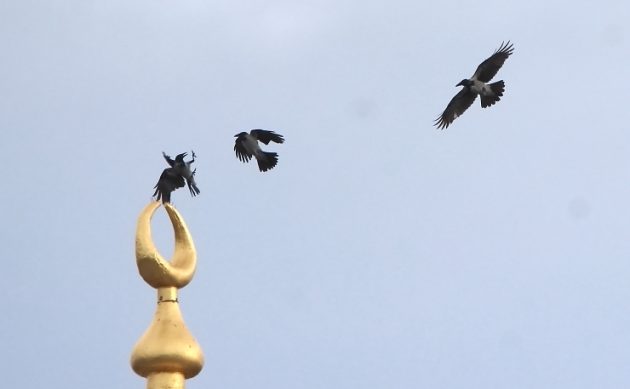
You may notice that the tip of the minaret has spikes attached. Apparently, minarets also mean perching, when allowed. So they don’t.
So, if you are ever in downtown Istanbul, the good news is that there will be birds — even if you have committed to a strict plan of tourism. We have our ways of getting around these limitations.











As a fellow American living in Mexico who visited Turkey for the first time last spring, I particularly enjoyed this piece. I can totally see the attraction for Mexicans to Turkish soap operas, haha! Laughing Doves and Alpine Swifts were lifers for me as well. Good for you, getting in a bit of birding while you were there!
It sounds like you wouldn’t have had enough time for this, but the tousist boats that cruise around the Bosphorus can be convenient ways to pick up Yelkouan Shearwater. I also got Pygmy Cormorant on the same boat. And there is a colony of Alexandrine Parakeets at a park not far from the Hagia Sophia.
Thanks Michael! I suspect this won’t be our last trip to Turkey, so I will keep your advice in mind. I did manage to pick up Cory’s Shearwater at Gibraltar on this trip.